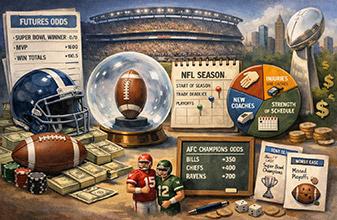Bankroll Accounting & Tax Liability

My own policy has been to pay in enough money to the Internal Revenue Service during the year to avoid any tax penalties, and then to send enough in April to over the remaining liability, and avoid those penalties. This is partly based upon the fact that I earn so little interest on my funds in my bank account that saving money on the IRS interest is worth doing.
There are some players who disagree with this position, and we have discussed it from time to time on Green Chip Law and Taxes. Their view is, “I can make a lot more on the money in my bankroll than the IRS money.” I disagree with this point of view.
First, we need to define “bankroll.” Some have argued that the players entire Net Worth should be counted as their bankroll. I tend to agree with this. The amount of money that one can risk should be based upon the overall balance sheet. As a general rule, this suggests that most part-time players are seriously under-betting. If the equity in your house has gone up, you can afford to bet more. If you get a raise in your day job, then you can afford to be more. And doing so would be a good investment.
But the key word here is the word “Net.” You should include in your Net Worth all your assets, but also subtract all known liabilities. If you have 100K in your bankroll, but you have a known 20K tax liability, then you don’t really have a 100K bank. You have an 80K bank. You would be over-betting if you sized your bets according to 100K bank.
By the way, this applies to all kinds of liabilities, not just tax liabilities. If you have a known payment that you have in the near future, it would be prudent to account for that now.
Let us look at several scenarios. Scenario A: First, it is January 1, and we have a large blackjack profit from the year before. Our tax liability is now fixed, and nothing we do now will reduce it. Therefore, it makes sense for our accounting purposes to subtract it from our bank before we do bet sizing. This is the primary situation I am discussing.
Scenario B is a somewhat different situation. Suppose that you are in the fourth quarter, and you have had a profitable year. So much so that you know you will be in the black at the end of the year, and you will certainly have a tax liability on your blackjack winnings.
At this point, you are effectively playing for reduced stakes. The amount depends on your marginal tax bracket. Suppose it is 1/3 (for many of us it is higher). If you make another $900, you will only get to keep $600, and you will pay $300 to the IRS. But if you lose $900, you will reduce your tax bill by $300, and you will only $600. In essence, your playing for 2/3 stakes. You have a partner, the IRS, now covering 33% of your action.
In my opinion the mathematically correct way to deal with scenario B is this way: First, adjust your bankroll for the size of the tax liability. Then scale your bet sizes up to reflect the marginal tax rate. In the example above where the player’s tax rate was 1/3, the player would increase the bet sizes by a factor of 1.5 (The formula would be 1/(1-r), where r is the marginal tax rate.).
This formula will often call for a big increase in bet sizes, perhaps more than is practical. An alternate approach would be to ignore the liability and just size the bets relative to this inflated bank. Usually this modified approach will lead to some under-betting, but there are some practicalities which favor it. It has the virtue of simplicity.
One year I lost a big chunk of money in December (about 40% of my year-to-date profit), which reduced the amount I had to pay to IRS. I say “fortunate,” because if you have to a big loss, it would be best under these circumstances.
However, once the tax year ends, our liability is then fixed, and will not be changed by further play. This is scenario A. At this point, the liability should be accounted for in your bet size considerations
I am aware of the issue of liquidity. Some of you may say, “But doesn’t having the cash on hand give us more money to work with?” This brings to the main point of my post: Liquidity in the short term is not very important.
The way to deal with this mathematically is to use the Trip Ruin formula. Suppose you want to know what the probability is that you will run out of money in the next quarter of the year. You do a trip ruin calculation, where the quarter becomes your trip. So let us run numbers.
Let us look at a part-time player, who has sized their bets at the half-Kelly level. What is the probability that he/she will lose half the bank? This is the probability of losing one Kelly Equivalent bank. Note that half the bank is not putting them into serious liquidity problems. They will still have funds to work with.
The Trip RoR depends on the “length of the trip”, as measured by the percent of N0. Here are the figures from my spreadsheet:
Prob of Losing 1 KEB
N0 RoR
1.0 9.04%
0.5 4.94%
0.1 0.06%
0.25 1.53%
Let us say that you play a lot of blackjack in good games, and you get 4 N0 in a year. Then you get about 1 N0 in each quarter. You then have a 9% chance of losing 1 KEB in that quarter. This sounds like a lot, but remember, for a half-Kelly player this is only losing half your bank.
If you only get 1 N0 in a year, then you get about 0.25 NO in a quarter, and the probability becomes 1.53%.
If you happen to have such an unfortunate losing streak, you will be thinking about resizing your bets. At this point, you should consider that outstanding liability in computing those bets, and not just look at the cash on hand.
This discussion has focused on part-time players. Full-time players will obviously get more play in. Many full-time players play for teams, and not betting only their own money, so entirely different considerations apply.











Please log in or register to leave a comment